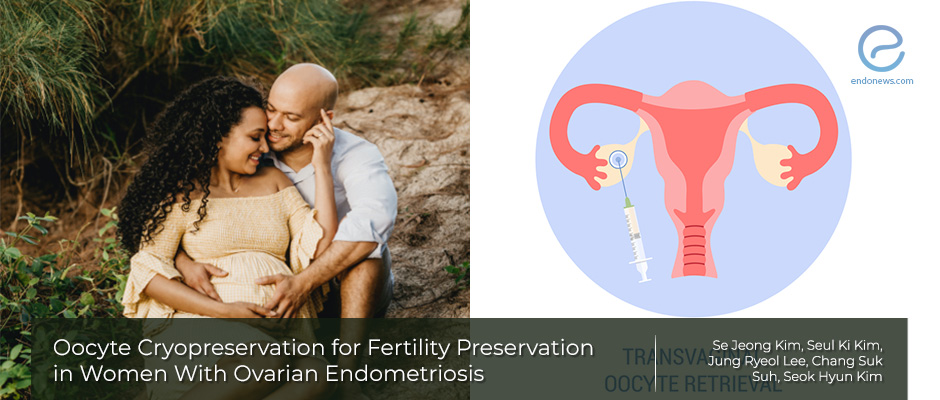Is oocyte cryopreservation useful for fertility preservation in ovarian endometriosis?
Jun 10, 2020
Repeated oocyte retrieval can provide the optimal number of oocytes for cryopreservation
Key Points
Highlights:
- To preserve fertility women with endometrioma should be counseled about oocyte cryopreservation.
Importance:
- This study addresses oocyte cryopreservation as a feasible option for fertility preservation before ovarian cystectomy.
What’s done here?:
- Researchers conducted a retrospective study where they evaluated the clinical characteristics and cycle outcomes of oocyte cryopreservation for fertility preservation in 34 women with ovarian endometriosis before ovarian cystectomy.
Key Results:
- Fertility preservation patients with endometrioma had a lower ovarian reserve compared to the women of the same age without endometrioma.
- Fewer oocytes were retrieved from fertility preservation patients with endometrioma.
- The number of oocytes retrieved is not affected by repeated oocyte retrieval in women with endometrioma.
Limitations:
- This study is retrospective and has a small number of study subjects.
- The authors reported only the results of oocyte cryopreservation, not the results after thawing.
Lay Summary
Women with endometriosis tend to have lower fecundity compared to normal couples. Furthermore, endometrioma itself may reduce the ovarian reserve by altering ovarian physiology in the surrounding healthy ovarian tissue.
The treatment for endometrioma is surgical removal in most cases, however, it may ve associated with the risk of premature ovarian failure.
Kim SJ et al., a group of researchers from Korea, analyzed the clinical characteristics and controlled ovarian stimulation outcomes of fertility preservation of women with endometrioma, and sub-analyzed the results according to laterality, with the aim of evaluating clinical characteristics and cycle outcomes of oocyte cryopreservation in these women before ovarian cystectomy.
Their paper has recently been published in the journal "Reproductive BioMedicine Online".
The mean age, serum anti-Mullerian hormone levels, and the number of oocytes cryopreserved were 30.7 years, 1.85 ng/ml, and 4.8, respectively.
The mean diameter of the largest endometrioma at the time of diagnosis was 5.7cm. The number of oocytes retrieved was significantly lower in the fertility patients with endometrioma compared to that in infertile patients without endometrioma. Patients with bilateral endometrioma had a lower number of mature oocytes compared to those with unilateral endometrioma, despite the serum anti-Mullerian hormone levels are similar in the two groups. In total, 38.2% of patients with endometrioma underwent repeated ovarian stimulation. The median number of retrieved oocytes at the first, the second, and the third cycle were 3.0, 5.0, and 3.0, respectively.
The authors concluded that women with ovarian endometriosis should be counseled about oocyte cryopreservation to preserve fertility before surgery since ovarian cystectomy decreases the ovarian reserve. Repeated controlled ovarian stimulation may provide an optimal number of oocytes for cryopreservation, they added.
Research Source: https://pubmed.ncbi.nlm.nih.gov/32295746/
endometriosis endometrioma fertility preservation oocyte cryopreservation ovarian reserve vitrification

